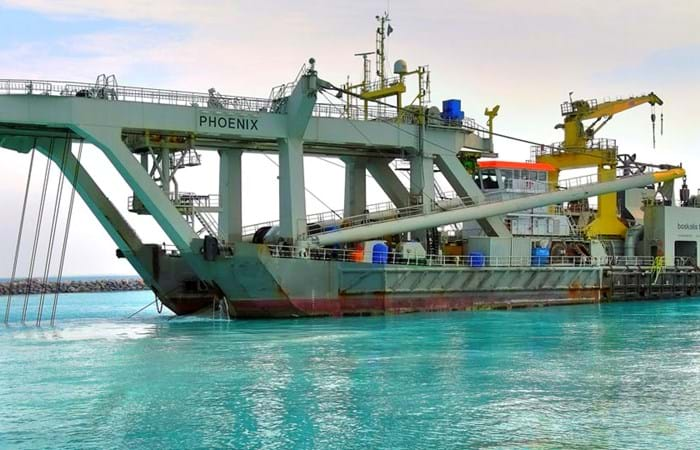The Khalifa Port and Industrial Zone (KPIZ), one of the world’s largest greenfield development projects, is part of Abu Dhabi’s major diversification plan to develop various sectors such as property, tourism, infrastructure and others. Abu Dhabi’s main existing port, Mina Zayed, is hemmed in by Abu Dhabi city, limiting its accessibility and the possibility for expansion.
The new Khalifa Port, located 4.6 km offshore, is built on an artificial island (Port Island) with a separate berth island (for Emirates Aluminum). These islands are connected to the mainland by causeways and bridges. Khalifa Port is scheduled to replace Mina Zayed by late 2012 and provides infrastructure for a wide range of industrial and commercial activities in Abu Dhabi. When completed, the first phase of Khalifa Port will handle 2 million TEUs, four times the capacity of Mina Zayed. In June 2007 the Khalifa Port Marine Consortium (KPMC) was formed with partners Boskalis Westminster Middle East Ltd., Archirodon Construction and Hyunday Engineering & Construction. In October 2007 KPMC was awarded a multi-faceted design, procurement and construction contract. The specified work included dredging of an access channel and port basin, land reclamation, rock protection works, breakwaters and quaywall construction, to be performed by the Consortium in which Boskalis had a 43% share. When the contract was awarded, most of the final Khalifa Port and Industrial Zone (KPIZ), Abu Dhabi design work for the port’s construction had yet to be done. The client – Abu Dhabi Ports Company (ADPC) – sought contractors with the skills and multidisciplinary services able to deliver design expertise as the operations progressed. Boskalis engineers from the inhouse company Hydronamic coordinated the design activities, not only in the dredging and reclamation works, but also in the rock protection works, breakwaters and construction of the quay walls, bridges and breakwaters.
